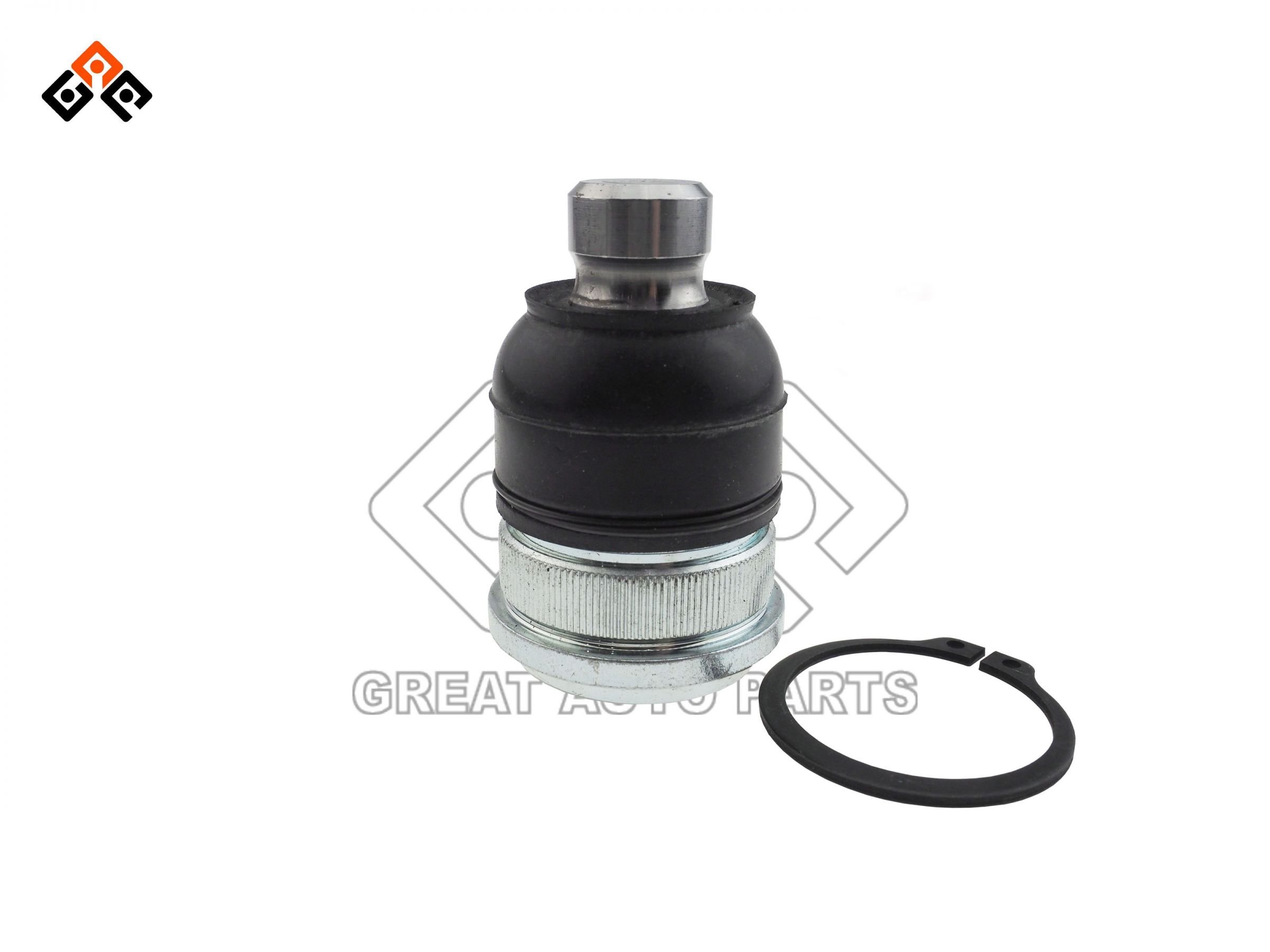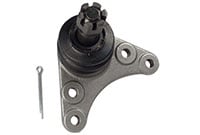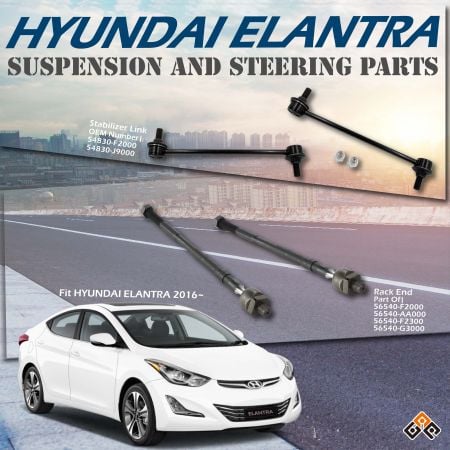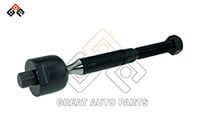Ball Joints: Your Comprehensive Guide to Suspension and Steering
In the world of automotive mechanics, few components are as critical as ball joints when it comes to ensuring your vehicle's suspension and steering systems perform seamlessly. Whether you're a car enthusiast or just a curious driver, understanding the inner workings of ball joints, their importance, and how to identify warning signs of wear and tear is essential knowledge. In this comprehensive guide, we'll dive deep into the world of ball joints, covering everything from the basics to practical maintenance tips.
What Is A Suspension Ball Joint?
Let's kick things off by demystifying the term "suspension ball joint." In essence, a suspension ball joint is a crucial element of your vehicle's suspension system. Its primary function is to serve as the pivot point between the control arms and the steering knuckle. This ingenious design allows for controlled movement and precise steering.
Ball Joints in Different Suspension Systems
Ball joints’ roles vary depending on the suspension design:
| Suspension System | Role of Ball Joints | Characteristics |
| MacPherson Strut | Lower ball joints connect the strut to the control arm, handling braking and cornering forces. | Typically simpler in design with one ball joint per wheel. Ideal for compact cars and known for ease of maintenance. |
| Short Long Arm (SLA) | Features upper and lower ball joints. The lower joint carries the majority of the load, while the upper aids alignment. | More complex but provides better handling, load distribution, and adaptability to varied road conditions. Suitable for heavy-duty vehicles. |
What Are the Parts of A Typical Ball Joint on Car?
A typical ball joint consists of several key components, each serving a specific purpose. The following table outlines these components:
| Component | Description |
| Housing | Protects the internal components from dirt, debris, and external contaminants. |
| Ball Stud | Central component that connects to the control arms and steering knuckle, allowing pivotal movement. |
| Bearings | Smoothly rotate the ball stud within the housing to reduce friction. |
| Boot | Seals the ball joint assembly, preventing the entry of dirt and moisture. |
Symptoms of Bad Ball Joints on Car
Recognizing early signs of failing ball joints is crucial for maintaining vehicle safety and performance. The table below summarizes common symptoms and their effects on vehicle performance:
| Symptom | Possible Cause | Effect on Vehicle |
| Clunking noise | Worn or loose ball joint | Poor handling when going over bumps |
| Vibrations | Loose or damaged ball joint | Vibration in steering wheel |
| Uneven tire wear | Misaligned suspension | Reduced tire lifespan |
| Steering problems | Loose or damaged ball joint | Wandering or loose steering |
| Visible damage | Cracked or torn rubber boot | Increased risk of contaminants causing further damage |
How Does The Suspension Ball Joint Operate
Understanding the operation of a suspension ball joint is essential for grasping its significance. These joints are engineered to pivot in multiple directions, allowing your vehicle's wheels to move up and down while also turning left and right. This flexibility is crucial for adapting to varying terrains and responding to your steering inputs as you drive.
What Are the Different Types of Ball Joints on Car
Ball joints come in various types to accommodate different suspension setups and vehicle designs. The two primary types are upper ball joints and lower ball joints. Both types work together to manage the movement and stability of the vehicle, depending on the suspension configuration.
| Type | Function | Characteristics |
| Upper Ball Joint | Maintains wheel alignment and assists in precise steering control. | Non-load-bearing in most vehicles. Located at the top of the suspension system and primarily designed to handle alignment forces rather than supporting weight. |
| Lower Ball Joint | Bears the vehicle’s weight and provides pivotal support for the suspension system. | Load-bearing in most suspension setups. Often subject to higher stress due to braking, cornering, and road vibrations, making them more prone to wear compared to upper ball joints. |
How to Repair Worn Ball Joints as an Automotive Technician
While repairing worn ball joints is a job best left to automotive technicians, understanding the process can help you appreciate the intricacies involved. Here's a general overview of the steps involved in replacing a ball joint:
Upper Ball Joints
- Safety First: Ensure your vehicle is securely supported on jack stands, and you're wearing appropriate safety gear.
- Lift and Support the Front End: Ensure the vehicle is securely supported, and the front end is raised.
- Remove the Cotter Pin: Take out the cotter pin that secures the ball joint to the steering knuckle.
- Remove the Pinch Bolt: Loosen and remove the pinch bolt that connects the ball joint to the control arm.
- Remove the Ball Joint: Carefully detach the ball joint from the steering knuckle using appropriate tools.
- Install the New Ball Joint: Install the new ball joint in the reverse order of removal, ensuring it's properly secured.
- Check Alignment: After installation, it's crucial to check the wheel alignment and ensure it meets the manufacturer's specifications.
- Test Drive: Take your vehicle for a test drive to ensure the steering and suspension are functioning correctly.
Lower Ball Joints
The process for lower ball joints is similar but may involve additional steps, depending on your vehicle's make and model. It's recommended to consult your vehicle's service manual or seek professional assistance for this repair.
How Many Ball Joints Does a Car Have
Most cars have either two or four ball joints, depending on whether they are front-wheel drive (FWD) or rear-wheel drive (RWD). In FWD cars, there are typically two ball joints, both located in the front suspension. RWD vehicles often have four ball joints, with two in the front and two in the rear. For larger commercial vehicles like trucks, the number of ball joints varies based on design and load requirements, with more robust configurations often needed.
How Long Do Ball Joints on Car Last
Ball joints on car typically last between 70,000 and 150,000 miles, but the lifespan can vary based on driving conditions, maintenance practices, and vehicle load. Regular maintenance, like lubrication and alignment checks, helps extend their life, especially in heavier commercial vehicles where wear is faster. Replace them if:
- Excessive play is detected in the ball stud and socket.
- Rubber boots are damaged, allowing contaminants to enter.
- Symptoms like clunking noises or uneven tire wear become apparent.
How to Tell if Ball Joints Are Bad While Driving
If you notice vibrations in the steering wheel, your vehicle pulling to one side, or uneven tire wear, these are clear signs of worn ball joints. It's important to address these symptoms promptly to prevent further damage to your suspension or steering system. These symptoms can also affect handling and vehicle safety, especially when driving at higher speeds or over rough terrain.

Choosing the Right Ball Joints for Your Vehicle
When selecting ball joints, it’s important to consider your vehicle type and the conditions in which it operates. Standard vehicles typically rely on aftermarket ball joints, while commercial or heavy-duty vehicles may require ball joints designed for higher load capacities. Off-road vehicles, trucks, or fleet vehicles often benefit from reinforced, high-performance ball joints that are built to handle rougher conditions and extended use. Ensuring the right ball joint is selected for the job will improve performance and longevity.
How to Maintain and Extend the Life of Ball Joints
Regular maintenance is key to extending the life of your ball joints. Ensuring that ball joints are properly lubricated, inspecting them during routine wheel alignments, and checking the condition of the rubber boots can prevent premature wear. For fleets, a proactive maintenance routine that includes frequent inspections and high-quality parts can help avoid costly breakdowns and extend the operational life of vehicles.
- Visual Inspections:
Look for torn rubber boots or visible damage. - Routine Lubrication:
Prevents wear from friction. - Professional Checks:
Ensure proper diagnostics using specialized tools
Why High-Quality Ball Joints Matter
Choosing high-quality ball joints is essential for protecting your vehicle, providing optimal handling, and preventing premature wear. For businesses managing fleets, durable ball joints mean fewer replacements, reduced downtime, and lower long-term maintenance costs. Investing in premium parts keeps both personal and commercial vehicles safe on the road for longer.
Ball Joint Solutions from Great Auto Parts
At Great Auto Parts, our products undergo rigorous testing and quality control to ensure exceptional performance and longevity. We specialize in providing high-quality aftermarket ball joints that meet the needs of various vehicles, from personal cars to heavy-duty trucks. Additionally, we offer customization services to tailor ball joints for specific vehicle requirements, ensuring maximum durability and performance. Whether you're managing a fleet or looking to enhance your personal vehicle, Great Auto Parts is your trusted partner in keeping vehicles running smoothly.
This comprehensive guide covers the essentials of ball joints, their types, signs of wear, maintenance tips, and the importance of quality parts. Trust Great Auto Parts for all your suspension and steering needs to ensure your vehicle remains safe and performs optimally.




